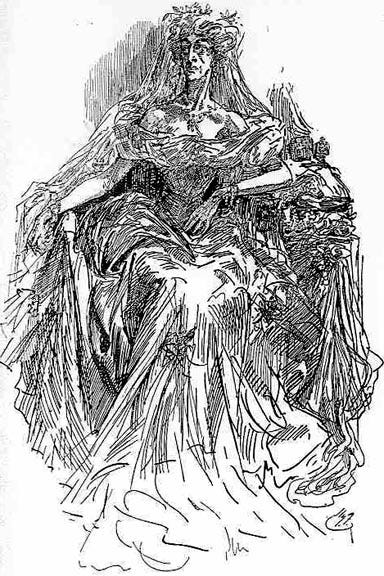Fat Expectations
Charles Dickens would be aghast
I haven’t read Great Expectations since I was in high school, so my memory of the plot is pretty fuzzy. There is one character I remember well, though—Miss Havisham.
Eternally bitter after being jilted at the altar, Miss Havisham is a chaotic force in the life of the novel’s protagonist Pip. She sets him up to fall in love with her adopted daughter Estella, for the express purpose of Estella breaking Pip’s heart. She succeeds in her scheme before suddenly repenting of her behavior, catching her dress on fire, and dying from her burns shortly after. A tragic character, really. But what is interesting to me is how she lives in my mind as a Victorian ghost—waif-like, stubbornly dressed in her wedding gown, pure spite in a spindly and thin frame.

But you’re not here for a recap of Dicken’s novel, are you? So let me get to my point.
What if Miss Havisham were fat?
Body size communicates something to us—culturally.
I’m no expert on the Victorian era, but I think Miss Havisham’s thinness is intended to communicate her meanness to the Victorian reader. [Contrary to her cinched waist in Harry Furniss’s image above, I believe her wedding dress would have more likely been made with an empire waist, where there was more room for fleshier people to breathe. Again—not an expert, but just looking at the dates for the Victorian era (1837-1901) and the novel’s timeline (early 1800s) would have put Miss Havisham’s wedding solidly in the Georgian era.] I have a hunch that the wiry-ness and leanness of her body were a cultural commentary on her character—an indication of her contemptible personality and hate-driven actions.
I also believe that if Dickens had been writing in our time, Miss Havisham would have been presented as a fat woman. Why? Because of the slow but massive cultural shift that occurred in the between the 17th and 20th centuries, where fullness of frame (aka fatness or just plumpness) as the desired body form was pushed out by the thin ideal. [For further reading, I can’t recommend these books enough: Dr. Sabrina Strings’s Fearing the Black Body: The Racial Origins of Fat Phobia (2019) and Amy Erdman Farrell’s Fat Shame: Stigma and the Fat Body in American Culture (2011). As Dr. Strings explains, the root of the shift was racially motivated—white women of “culture” wanted to distinguish their bodies from the fuller Black bodies inhumanely paraded before them as exotic specimens.]
What does fatness communicate to us in characters?
The things that Dickens explicitly communicated about Miss Havisham are often found in the characterization of fat bodies in modern storytelling—foolishness, greed, vileness. Think about fat characters you’ve encountered in modern stories—how many are the antagonists? I’m thinking about the wicked stepsisters in Disney’s Cinderella, the trope of the fat bully, and the awful representation of the fat children in Netflix’s 2019 animated film Klaus.
Not until Dumplin’ (2017) did I see someone onscreen with a fat protagonist whose central role was not weight loss. Other positive representations of fat characters exist in a few places—Kate from This Is Us, and…honestly, I can’t bring any others to mind at the moment. Let that be a commentary on how few fat characters we get to love.
Let that be a commentary on how few fat characters we get to love.
So, what do you think? Would Dickens have made Miss Havisham fat in our day?
Also—shower me with your fat protagonist recommendations because, apparently, I need more exposure!




This is fun to think about. It makes me ponder how I picture other literary characters.
I would say Aidy Bryant's characters on SNL. She got to play all kinds of characters without her weight being the comedic punchline.